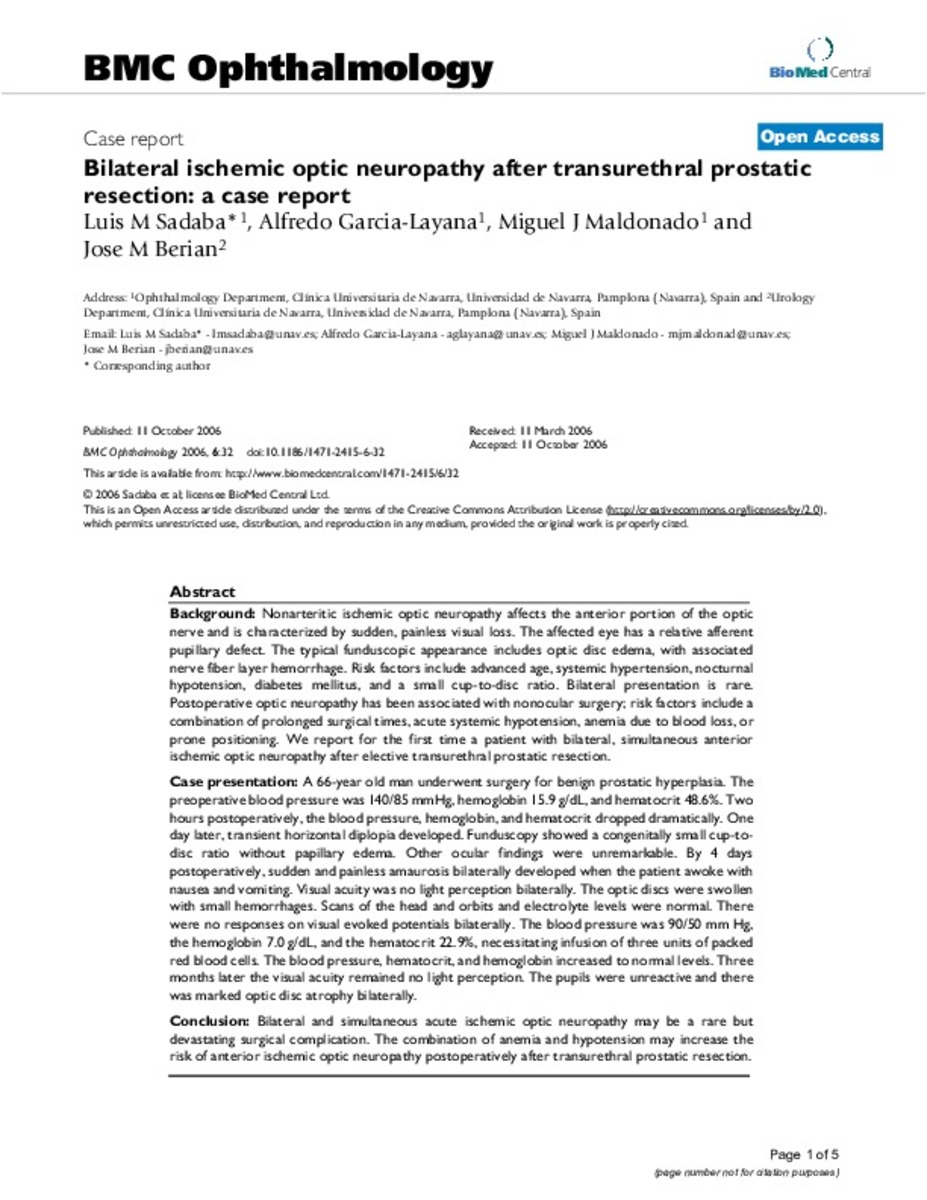Bilateral ischemic optic neuropathy after transurethral prostatic resection: a case report
Palabras clave :
Optic Neuropathy, Ischemic/blood/etiology
Postoperative Period
Prostatic Hyperplasia/surgery
Fecha de publicación :
2006
Editorial :
BioMed Central
Cita:
Sadaba LM, Garcia-Layana A, Maldonado MJ, Berian JM. Bilateral ischemic optic neuropathy after transurethral prostatic resection: a case report. BMC Ophthalmol 2006 Oct 11;6:32
Aparece en las colecciones:
Estadísticas e impacto
0 citas en

0 citas en

Los ítems de Dadun están protegidos por copyright, con todos los derechos reservados, a menos que se indique lo contrario.








